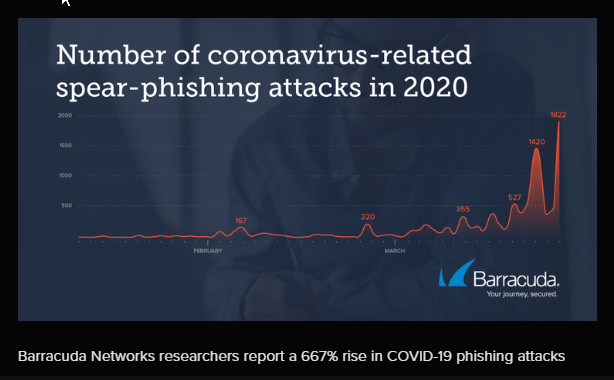Hikvision Senior Director of Cybersecurity on the Rise in COVID-19 Phishing Attacks, Plus Cyber Tip of the Week

As COVID-19 becomes a global concern, cybercriminals are leveraging this tragedy to spread their own kind of virus to prey on the fears of people around the world. Hikvision’s senior director of cybersecurity Chuck Davis recently discussed phishing hacks and malware related to the coronavirus.
In this blog, Hikvision’s Davis covers a big uptick in coronavirus-related phishing scams in February, and offers a weekly tip to prevent becoming a victim of hacks and other cyberattacks.
Phishing Attacks Grow More Than 600 Percent in February
Barracuda Networks researchers have seen a steady increase in COVID-19 coronavirus-driven phishing attacks, and since the end of February 2020 they found a 667 percent rise in these attacks.
From the Barracuda blog: “Between March 1 and March 23, Barracuda Sentinel has detected 467,825 spear-phishing email attacks, and 9,116 of those detections were related to COVID-19, representing about 2 percent of attacks. In comparison, a total of 1,188 coronavirus-related spear-phishing attacks were detected in February, and just 137 were detected in January. Although the overall number of these attacks is still low compared to other threats, the threat is growing quickly.”
In addition to sharing some examples of the latest phishing attacks, Barracuda Networks also gave some recommendations to protect yourself from those attacks. Here are four tips from the article:
- Be wary of any emails attempting to get users to open attachments or click links.
- Watch out for any communications claiming to be from sources that you normally would not receive emails from.
- Use caution with emails from organizations you regularly communicate with.
- Find credible charities and donate directly.

Hikvision Cyber Tip of the Week
While not everyone is into cybersecurity, Darknet Diaries is a podcast that everyone can enjoy. Podcasts have become an important part of many people’s lives. Increasing numbers of people enjoy tuning in to podcasts during a commute to work (back in the good ‘ole days) or when they’re going for a run, or just trying to mentally escape from the reality of staying at home all the time.
The podcast’s host, Jack Rhysider, is an experienced cybersecurity professional, but his humble approach to storytelling shines the spotlight on his guests, his riveting stories, and insights to stay on top of the latest cybersecurity trends. You don’t have to be a cybersecurity expert to listen to this podcast, but you may feel like one after you finish listening.
For more cybersecurity insights, click this link to read the Hikvision blog: “Hikvision Senior Director of Cybersecurity on Using Zero Trust Network to Address Security Concerns.”
